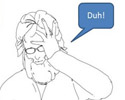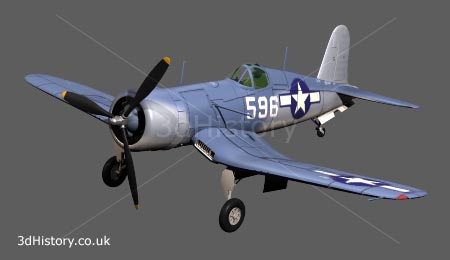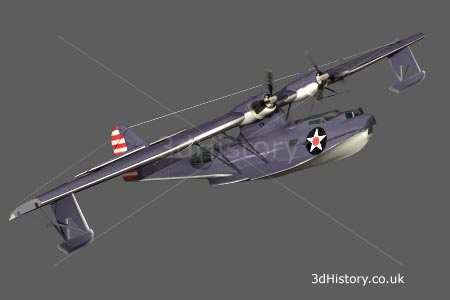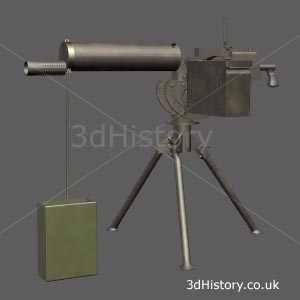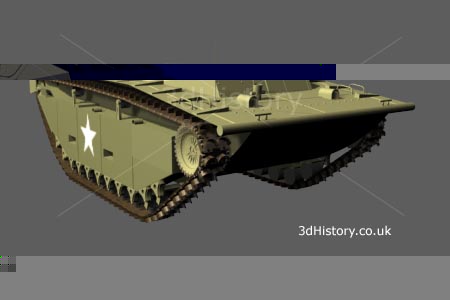The Second World War - The Pacific - World War Two - War Machines
The Pacific
The Pacific war started on December 7th 1941 when Japan launched an unprovoked attack on the United States naval base of Pearl Harbour seeking to destroy the American Pacific fleet based there.
The attack on Pearl Harbour was deemed a success by the Japanese in that it destroyed substantial elements of the American Pacific Fleet. It was, however, a massive failure in that it failed to eliminate the American aircraft carriers, that were at sea, or critical infrastructure such as fuel depots and service installations. More importantly it galvanised the American people into unilateral action against the Axis powers.

The Mitsubishi A6M Type 0 (Zero) was introduced by the Japanese Navy early in World War Two. At this time it was probably the best carrier based fighter in the world due to its long range and superb maneuverability. As the war progressed the disadvantages of the Zero became obvious and it suffered high casualty rates. It was poorly protected and became outclassed by newer Allied aircraft that were being flown with new tactics specifically developed to combat the Zero.
Air power was a critical factor in the Pacific campaigns. Aircraft carriers were a key element in providing the American fleet with the potential to attack targets over the horizon. There were a number of carrier actions during the war, the most notable being the Battle of Midway, during June 1942, when aircraft from the American carriers: Yorktown, Hornet and Enterprise sank four Japanese carriers for the loss of Yorktown.
The USS Hornet was of a class of warships that was specifically developed for operations as an aircraft carrier. The Class also included USS Yorktown and USS Enterprise. Hornet was the carrier chosen to launch the Doolittle Raid, on April 18th 1942, when a squadron of B25's made a one way trip to bomb Tokyo in retaliation for the Pearl harbour raid of December 1941.
Japan had established a defensive ring of island fortifications around the Pacific. American strategy was to assault some of these and isolate the others, starving the garrisons into submission.
|
|
PT Boats were small, fast boats used to attack larger ships and perform a variety of clandestine and recovery missions. They were armed with torpedoes, attacking under cover of darkness at fast speed to get close to their target, their low silhouettes making them difficult to detect and aim at accurately. |
|
The F4 Corsair was rated as the best American fighter of the war by its Japanese opponents. Despite being a big fighter it was fast, having a top speed in excess of 680 km/h. Teething troubles meant it wasn't cleared for carrier operations until late 1943. Before that it was operated very successfully by the Marine Corps from land based airfields. |
|
The Pacific is huge, with few prepared airfields. Flying boats provided to means to project power to many isolated corners of the war zones that would have been inaccessible to conventional aircraft.
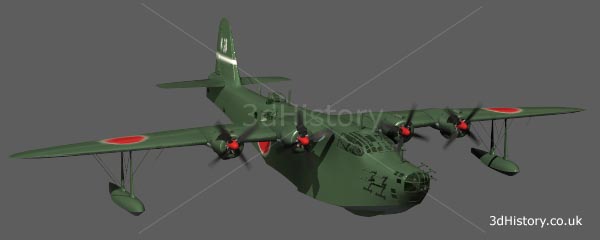
The Japanese Kawanishi H8K Emily was a heavily armed bomber being able to deliver bombs or torpedoes over a long range. After refueling en-route from a surfaced submarine two Emily's made a second attack on Pearl Harbour during the morning of March 4th 1942. The attack was unsuccessful because cloud cover made it difficult for the bombers to identify the targets. They dropped their bombs around the harbour entrance and returned to base in the Marshall Islands.
|
|
The Consolidated PBY Catalina was design as a patrol bomber but also served in many other roles throughout the war including: search and rescue, supply, maritime patrol, agent insertion and anti-submarine. Later versions were also fitted with retractable wheels making it amphibious, capable of landing on water or land. |
Fighting in the jungle was very challenging,: there were few roads that could take the weight of heavy equipment; visibility was limited and combat was often at close range and personal.; the terrain made it extremely difficult impossible to deploy armour.
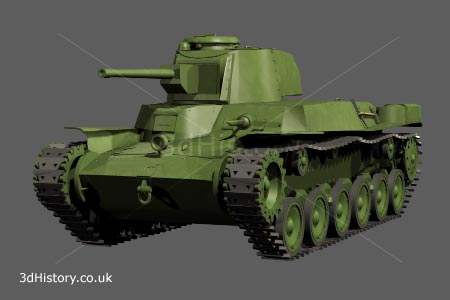
The Type 97 Chi-Ha was a Japanese medium tank that was used for infantry support in China and the Pacific. It was armed with a 57 mm main gun mounted in a two man turret and two machine guns: one mounted in the hull and the other mounted co-axially with the main gun in the turret. It had very thin armour that didn't even protect the crew from small arms fire. It was light and this made it very useful in the jungle being able to cross relatively small, weak bridges that would have collapsed under the weight of bigger tanks.
Occasionally the Japanese would mount a last ditch "Banzai" charge, in which a large number of infantry would charge "en masse' in the hope of breaking allied morale and forcing a retreat.
|
|
The M1917A1 was a belt-fed watercooled light machine gun used by the American army and Marines. It could fire up to 600 rounds per minute and was very |
Island assaults required amphibious vehicles that sometimes needed to cross coral reefs on their way to the beaches. The US Marines had a range of specialised amphibious Alligator LVT's (Landing Vehicle Tracked) available, which were developed from a hurricane rescue craft designed by John A. Roebling before the war. LVT's were first used at Guadalcanal in 1942.
|
The LVT(a)-4 was a version that carried a small howitzer to provide close infantry support during and after the landings. Being tracked meant that LVT's were particularly useful in the Pacific; they were well equipped for crossing coral reefs on their way to the beaches. Other craft had to avoid such obstacles or risk becoming beached. |
|
In the Pacific the American Navy managed to do what the German Kriegsmarine had failed to do in the Atlantic. The systematic attack of shipping in and around Japanese home waters denied them access to vital war resources, particularly oil, from their overseas empire.

The Gato class of Submarine was designed to operate in the Pacific with the fast Carrier fleets. It was much bigger than a German U-Boat and had a huge range, being able to remain on patrol for over two months at a time. Early operations were frustrated by problems with torpedoes, but by 1941 these had been sorted out and the Gato, and its derivatives the Balao and Tench classes, went on to become very effective, sinking a vast amount of Japanese shipping.
